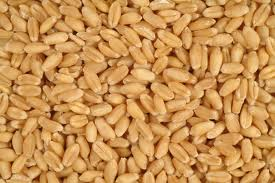Response of wheat seed to priming combinations
Keywords:
Germination, wheat, cultivar Darya, osmo-priming, hydro-primingAbstract
An experiment using the randomized complete block design in three replications was conducted in 2013 under laboratory conditions to study the effects of different treatments of hydro-priming and osmo-priming on seed germination of the Darya cultivar of wheat. The treatments studied included subjecting the seeds for 12 or 24 hours to polyethylene glycol 6000 at three concentrations (5, 10, and 15 percent), potassium nitrate at three concentrations (1, 2 and 3 percent), potassium chloride at three concentrations (1, 2 and 4 percent), and a control treatment of distilled water. Results obtained showed that the rates of germination, total percentages of germination, percentages of normal seedlings, lengths of the radicles and sprouts, length ratios of root to shoot, lengths of the seedlings, dry weight of radicles and weight ratios of root to shoot were statistically significant at one percent level, but the dry weight of the sprouts and seedling weren't statistically significant. The maximum germination rate (22.11) was achieved in the treatment of 8 hrs using distilled water, and the minimum germination rate (7.61) in the 16 hrs treatments with four percent KCL. The highest total germination rate (100) was observed in the treatments of distilled water with 16 hrs, where as the lowest (40.67) observed in the 16 hrs treatment using 4 percent KCL. The results also indicated that the highest percentages of normal seedlings (95.33 and 100) belonged to the 8 and 16 hrs treatment with distilled water respectively, and to the 8 hrs treatment of using five percent PEG (92.67) and 1 percent KNO3 at 16 hrs (96.67), and the lowest (40.00) was that of the 16 hrs treatment with four percent KCL. Results observed also suggested that the factors measured, including the rate and the percentage of seed germination and also the lengths of the radicles and sprouts and seedlings, exhibited an ascending trend when higher concentrations of osmo-priming compounds were used. These compounds showed their greatest effects when used at low concentrations.
References
Bagheri, A., Nezami, A., Soltani, M., 2000. Breeding cryophilic pulses for stress tolerance (Translation). Res. Educ. Extens. Organ.
Basra, S.M.A., Ashraf, M., Iqbal, N., Khaliq, A., Ahmad, R., 2004. Physiological and biochemical aspects of pre-sowing heat stress on cotton seed. Seed Sci. Tecnocal., 32, 765- 774.
Bradford, S., Bewley, J.D., 1997. Osmotic Priming of seeds of crop species with polyethylene glycol as a means of enhancing early and synchronous germination at cool temperature. Can. J. Bot., 59, 672 – 676.
Callen, N.W., Mathre, D.E., Miller, J.B., 1990. Bio- Priming seed treatment for biological control of pythium pre-emergence damping off in Sh2 sweet corn. Plant- Disease., 74 (5), 368- 372.
Chojnowski, F.C., Come, D., 1997. Physiological and biochemical changes induced in sunflower seeds by osmopriming and subsequent drying storage and aging. Seed Sci. Res., 7, 323 -331.
De, F., Kar, P.K. 1994. Seed germination and seedling growth of mung bean (Uigna radiate) under water stress induced by PEG-6000. Seed Sci. Technol., 23, 301-304.
De villiers, A.J., Van Rooyrn, M.W., Theron, G.K., Van Deventer, H.A., 1994. Germination of three Namaqualand pioneer species, as influenced by salinity, temperature and light. Seed Sci. Technol., 22, 427- 433.
Drew, R.L.K., Hands, L.J., Gary, D., 1997. Relating the effects of priming to germination of unprimed seeds. Seed Sci. Technol., 25, 537- 548.
Ellis, R.H., 1989. The effects of differences in seed quality resulting from priming or deterioration on the relative growth rate of seedlings. Acta Horticulture., 253, 203- 211.
Hardegree, S.P., Emmerich, W.E., 1994. Seed Germination response to polyethylene glycol solution depth. Seed Sci. Technol., 22, 1-7.
Kafi, M., Goldani, M., 2000. The effects of water potential and substances creating it on germination of the seeds of three crop plants of wheat, sugar beet, and peas. J. Agr. Sci. Res., 10(15), 121 – 123.
Khan, A., Miura, H., Prinsinski, J., Ilyas, I., 1990. Matri conditioning of seeds to improve emergence. In the proceedings of national symposium in stand establishment of Horticultur. Crops., Pp. 19-40.
Khajeh-Hosseini, M., Powell, A.A., Bimgham, I.J., 2003. The interaction between salinity stress and seed vigor during germination of soybean seeds. Seed Sci. Technol., 31, 715-725.
Michel, B.E., Kaufmann, M.R., 1973. The osmotic Potential of polyethylene glycol 6000. Plant Phys., 51, 914-916.
Mohseni, A., Rezaee Soukhtabandani, D., Ramazani, M., Mobasser, H., 2010. The effects of osmopriming on germination ability of seeds of two hybrid corn cultivars. Sci. Res. Q. Crop Plant Physiol. Islamic Azad Univ. Ahvaz., 2(2), 25 – 44.
Parera, C.A., Cantliff, D.J., 1994. Presowing seed priming in "Horticultural Reviews volume 16" Edited by Jannick. J., 119-141.
Penalosa, A.P.S., Eira, M.T.S., 1993. Hydration dehydration treatments on tomato seeds (Lycopersicon esculentum Mill.). Seed Sci. Technol., 21, 309-316.
Pourkolhar, W., Mobasser, H.R., Mirhadi, M.J., Sharifabad, H., 2009. Study of the effects of osmopriming on germination and the features of seedlings of several medicinal plants and oil crops, M. SC. Thesis in Agronomy, the Islamic Azad University of Tehran. Res. Sci. Dep.
Srinivasan, K., Saxena, S., Singh, B., 1999. Osmo and Hydro-priming of mustard seeds to improve vigour and some biochemical activities. Seed Sci. Technol., 27, 785-793.
Yadavi, A.D., Balouchi, H.D., 2010. The Application of Priming for the Purpose of Improving the germination Components of Garden Fennel – Flower under Conditions of Salinity Stress. Res. Inst. Env. Sci. Shahid Beheshti Univ. Tehran, pp 1976 – 1979.

Published
How to Cite
Issue
Section
Copyright (c) 2014 Esmaeil Yasari, Omid Ghasemi Chepi

This work is licensed under a Creative Commons Attribution-NonCommercial-NoDerivatives 4.0 International License.



